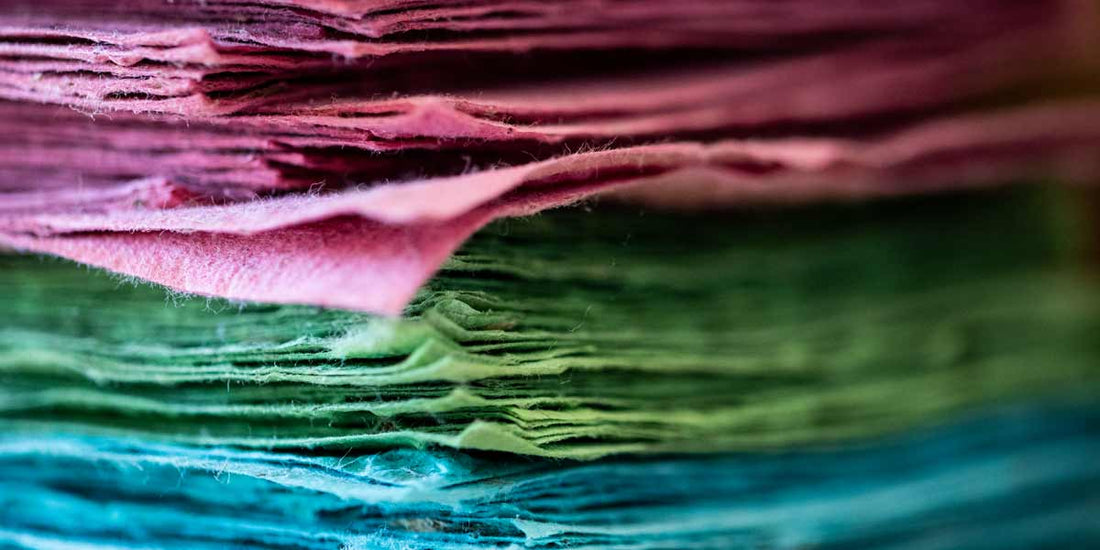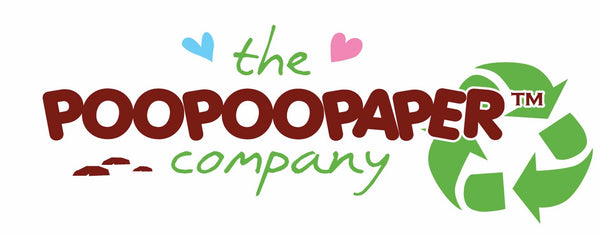
A Step-by-Step Guide on How to Make Handmade Paper – The POOPOOPAPER Way
Share
Looking to keep your kids occupied now that they're out of school? How about teaching them how to make handmade paper? You can have them draw on it when they're done too. Not only is this activity great for idle hands, it makes for a great lesson on recycling and sustainability too. Read on to keep your kids off back while educating yourself and others on innovative sustainability.

What is Handmade Paper?
While it’s rather self-explanatory, let’s do our due diligence anyway. Handmade paper is paper that has been individually crafted per sheet, by human hands, as opposed to the popularized machine-milled way. This results in rustic, textured paper – no two will be the same! It’s the way they used to make it back in the olden days, when they had to rely on hand-laying pulped fibers on molds. To learn more about the history of paper and how it was made in the past, you can read our comprehensive page on that topic here.
The handmade paper from POOPOOPAPER is unique because not only are they handcrafted by our talented local artisans, but the material that makes up our organic paper pulp comes from… elephant poop. Yes, you read that correctly. It’s that fun fact right there that will keep your children’s attention. After all, kids are intrigued by the icky. Nothing makes them laugh harder and hold their attention longer than a poop joke. So, why not curate a whole experience about how you can turn natural materials, like elephant poop, into handmade paper? We can already hear them excitedly bragging about their experience to their classmates at the start of the school year now.
From Poo to Goo to Paper: A Step-by-Step Guide
While we’re introducing you to our Poop to Paper Process, do know that if you’re making handmade paper at home that you’ll have to substitute certain materials. Unless you conveniently have an elephant in your backyard, you’re going to have to switch out doo with other fibrous material. (And no, it doesn’t matter how fiber-forward your diet is, your own doo doesn’t count.)

Step 1: Collect The Poo
The first step in our process to make handmade paper is to gather poo. We use elephant poo because it’s abundant in northern Thailand, where many sanctuaries and parks exist to house and care for elephants that have been taken out of unfortunate circumstances. Rather than going out of our way to find fibrous material, we use what’s available to us. Elephants are herbivores with highly fibrous diets; their meals consist of bamboo, sugar cane, grass, banana trees, leaves, twigs, fruits, and other various local plants and vegetation. Their digestive systems also aren’t the best and don’t entirely break down all the fibers they eat, resulting in a lot of fibers remaining intact when they do their business.
Step 2: Clean The Poo
We don’t just pick up elephant turds and call it a day. Once our elephant poo fibers are collected, we clean it to remove as much non-fiber materials as possible. What’s left after the process is actual fiber material, and we take that and boil it in extremely high temperatures (90-100 degrees Celsius) of water for 4-6 hours to kill off the bacteria. Unlike modern day paper-making, our cleaning and boiling process uses no chemicals like bleach or chlorine that would be harmful to the environment – only pure H2O. This allows us to reuse the water to either boil more fibers in the future, or nourish the nearby trees, flowers, and gardens near our production.
Step 3: Blend To Goo
After turning poo into goo, we then blend it with other seasonably available non-wood fiber pulp material to make our handmade paper stronger and well-bonded. Depending on the season, these non-wood fibers may consist of corn stalks, pineapple husks, hay, banana tree trunks, or mulberry bark. Once mixed and blended together, our raw pulp turns into a stringy, cellulose-filled stew mixture that we can turn into paper.
Step 4: Color The Goo
If you hate fun, skip on over to Step 5. But if you like joy in your life, this is the step in the process where you can color your fibrous pulp. At POOPOOPAPER, we use non-toxic, soy-based food coloring to create different shades of handmade paper. After dyeing the pulp in vats of water with the color of your choice to dye it, we then drain the water and form the pulp into round balls of similar weight. The drained water can then be reused for another batch, or much like the water we used for boiling, we use it to water the surrounding vegetation.
Step 5: Spread The Goo
Once we have our goo ball, we then spread it in a large basin filled with water where a framed screen is already submerged. The screen (or ‘papermaker’ if you want to use specific terms) then catches the pulp fibers and manually spreads them across the entire surface of the screen. This creates an even layer with no fuss.
Step 6: Dry The Goo
Once the screen is lifted up from the water and any small particles you don’t want are removed by hand, lay the screens facing the sun for several hours until the pulp has dried. Drying time may vary depending on the thickness of the sheet. Being based in Thailand where the sun loves us, it doesn’t take too long until our goo has turned into gorgeous sheets of handmade paper that we turn into our POOPOOPAPER products.

That’s All, Folks!
We hope we entertained you and your kids. If the experience was interesting for them and they’re jonesing to learn more about innovative forms of sustainability, you can educate them on paper made out of poop with more context using our educational classroom kits or take them to our very own POOPOOPAPER Park! Here, you can pull up a stool beside our artisans, roll up your sleeves, and make your very own elephant poop paper masterpieces.
While a modest sustainable company like us knows we can’t change the trajectory of the world, we do know we can do what we can with what we have. And if a lot of people come together to do what they can with what they have, well… that makes a big difference, doesn’t it?
